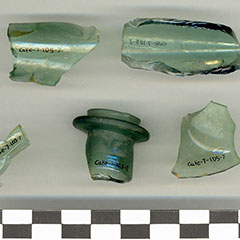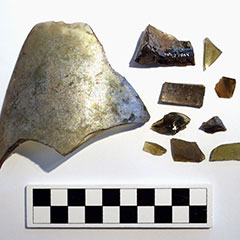Palisade and Muskets
In 1704, the Governor of New France, Louis-Hector de Callière, had a fort built next to the Saint-François River, according to plans drawn up by the engineer Levasseur de Néré. The fort had a 4.5 m high wooden palisade with a bastion in each of its four corners. It protected the mission and its inhabitants from attacks by the Iroquois and the British.
The settlement also served as a supply point, providing weapons, gunpowder and provisions to the allies of the French. Abenaki warriors came here to get supplies between raids. To protect the fort, a few dozen warriors and French soldiers acted as lookouts.
Concerned by the armed threat posed to New France by the British, Louis Franquet, Engineer to the King of France, did a tour of inspection of the colony’s fortifications in the summer of 1752. He visited the fort at the Saint-François mission, but the Abenaki chiefs, Jesuit Father Aubery and the warriors were not there. They had left to take part in territorial negotiations between the Abenakis and the British.













